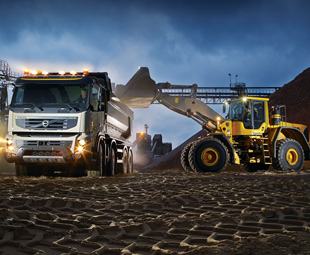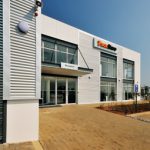Joining the green revolution

The construction industry need not be a completely dirty one. With minor changes and adjustments, this sector can also contribute toward a more sustainable future, writes FARZANA CHAUMOO.
The construction industry is in a unique position to support environmental benefits as it plays a vital role in improving the environmental performance of the country’s buildings and infrastructure. This can be achieved through improvements to new structures being built and through everyday on-site practices undertaken by contractors.
If a large number of small sources of greenhouse gas emissions within the construction industry were to adopt energy- and climate-conscious practices, total emissions could be reduced substantially.
The main decisions that result in greenhouse gas emissions, for example, those relating to the design of structures and selection of sites or materials, are usually made by project owners, architects and design engineers. During the construction phase, it is often the contractors that have control over many of the activities associated with the emissions at a construction site, as they decide how efficiently fuel and electricity are used.
Better fuel efficiency will result in lower costs and reduced emissions. With the ever-rising fuel prices, fuel efficiency is becoming a higher priority. Benefits that arise include increased equipment life and reduced emissions of air pollutants such as particulate matter.
A detailed study on emissions in the construction sector, undertaken in the United States (US), found that if construction companies reduce idling by an average of ten hours per month, per company, the resulting greenhouse gas emissions savings, sector-wide, would total approximately 650 000 t of CO2 per year.
Savings would occur whether there is a reduction of ten hours per month from one piece of equipment, or a reduction of one hour a month from ten pieces of equipment. The study also mentions that if machine maintenance is done properly and timeously, less propane will be used, which will lessen CO2 emissions.
The incorrect inflation of tyres, in addition to poor wheel alignment, will also increase fuel consumption as more power is needed to move the machine. Driver training is also very important and can provide cumulative savings as equipment is operated more efficiently.
Equipment manufacturers are now offering more fuel-efficient machines through the advances in engine technology, weight reduction in parts and accessories and the use of hybrid technologies.
One such company, that is making quick advancements in construction equipment, is Volvo. It has a new range of compliant diesel engines that reduce emissions and fuel consumption and improve profitability. The company displayed 25 machines (of which 17 were new), at the recent Conexpo, in the US. These high-concept machines created a buzz with their cleaner, energy-efficient engines that all meet Euro-4 emission requirements. These machines are meant to increase productivity, efficiency and serviceability on site.
The new engines, which incorporate selective catalytic reduction (SCR), have been authenticated through multi-application field-testing and found to have an 80 percent reduction in nitrogen oxide (NOx) emission levels.
SCR is a technology that has been used in Volvo trucks since 2005. It uses an injection of a reagent liquid (a 32,5 percent solution of urea in deionised water) into the exhaust gas flow. This converts NOx to nitrogen and water, both of which are found naturally in the air.
The cooled external exhaust gas recirculation system also works to lower the NOx levels by diluting the air in the combustion chamber. The system also lowers combustion peak temperatures. Variable geometry turbochargers on the D13 and D16, or waste-gated turbochargers on the smaller engines, provide instant torque at low engine speeds. This boosts power and enhances the engine’s performance for better fuel economy.
The GaiaX concept compact excavator that was revealed at Conexpo has zero emissions and moves silently, making it perfect for use in the city. It has four electrically powered tracks that provide good ground surface contact and ensure stability and manoeuvrability, even on steep inclines, and can be used through the power of the rechargeable batteries, or can be plugged into an external electrical power source.
In keeping with its trademark of safety, the machine has an integrated first-aid kit, as well as an airbag that inflates from the seat to protect the operator in case of any collisions or mishaps. The guard rail is made from lightweight steel.
Volvo has set itself the target of reducing accidents, in relation to its equipment, to zero through the addition of warning sensors (that can also be found in the GaiaX) to notify the operator of the presence of people nearby.
Furthermore, the company is working with several universities in Sweden and in Germany to develop autonomous construction equipment that will not require an operator on board.
Caterpillar is also working on projects and technology to help its customers operate more sustainably through reducing greenhouse gas emissions, minimising waste, managing water consumption, increasing recycling, using fuel flexibly and creating hybrids, in addition to creating autonomous machines.
Equipment such as hydraulic fans can also reduce fuel consumption and the accompanying emissions. Unlike belt-driven fans, hydraulic fans operate with variable speed to optimise engine cooling when needed, whereas, with belt-driven fans, the air flow is dependent on the engine speed and not on the cooling demand. Less power is therefore required for cooling when using hydraulic fans and the lowest amount of fuel per horsepower is consumed when the engine is operating consistently at an optimal temperature.
As a substitute to petroleum or diesel, low-carbon fuels can be used to reduce greenhouse gas emissions. There is also potential in replacement engine systems to reduce fuel consumption and emissions through the use of new technologies.
An older piece of equipment can also be repowered with a new diesel engine and brought up to the fuel economy, emissions and maintenance standards of new equipment, consequently reducing the overall equipment operating costs. A possible reduction in emission levels will be based on the age of the engine that is being replaced and the differences in technology.
* Farzana Chaumoo is the 2014 South African Guild of Motoring Journalists’ bursar programme recipient. She recently spent a month with FOCUS where she was exposed to the world of transport journalism.
Published by
Focus on Transport
focusmagsa




